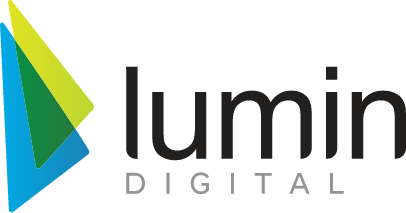Your financial institution’s plans, and your ability to deliver on them, are only as good as the data you’re using to make decisions. Banks and credit unions are no strangers to using “big data” to forecast revenues and operational needs. However, many are missing out on one of the most valuable uses for the millions of pieces of customer data that are collected daily — the ability to leverage this population-wide, composite, transactional and behavioral data to enhance their understanding of the people they serve and facilitate insight-based decision making rather than educated guesses.
Leveraging customer data to guide digital banking solutions requires accurate analysis of the data that’s collected as well as an effective ability to connect seemingly disparate pieces of information to develop a cohesive customer story. Understanding the tools and strategies banks and credit unions need to employ is imperative for the growth and success of financial institutions in the future.
Understanding Your Customers
Mobile and online banking has grown exponentially over the last decade, most notably in the past year with the outbreak of coronavirus. This shift has created a wealth of personal and transactional information that banks and credit unions can use to build a 360-degree view of their customers.
However, this level of understanding goes beyond segmentation and customer personas. Banks and credit unions must be able to use data to answer some key questions: Who are the core customers of your institution? Who are the ones you serve best? What are their needs now and for the foreseeable future? How can you best meet those needs?
Rather than categorizing by basic demographics and creating hypothetical customers, effective use of comprehensive transactional and personal data can fill in a number of crucial variables for real customers such as:
- The number and type of accounts they have
- Products and services they’ve shown interest in
- Major life events
- Marriage and family status
- Preferences for in-person, online and app-based transactions and services
This data is also crucial for effective Know Your Customer (KYC) compliance purposes.
Analyzing the Data
Information gleaned from transactions, connected devices, mobile app data, server logs, social media activity and customer communications can enable banks and credit unions to better assess what customers want and tailor their products and services accordingly. But this data needs effective analytics to transform raw information into actionable, insight-driven strategies.
For example, data that seems insignificant or unrelated can actually have a strong correlation to customer behaviors. This was famously demonstrated in the 1992 Osco Drug study that saw stores moving their diapers and beer closer together — with a marked increase in the sales of both — after a correlation was found between the purchase of the two.
Banks and credit unions can use a data analytics banking platform to skim historical and real-time data and find otherwise overlooked patterns. This leads to an increased level of informed decision-making and creates a better view of customers. Analytics can unlock the potential of data to track customer spending patterns, personalize product offerings and respond more effectively to customer feedback. Having in-depth insights into customer data can also help banks and credit unions recognize and accommodate the needs of their customers during both personal and large-scale economic shifts.
Identifying Customer Needs
Relevant, personalized products and services that are tailor-made for each customer must be a priority to thrive in the coming years. Using analytics can help banks and credit unions recognize customer needs and offer personalized, timely products and services. This is where banks and credit unions can answer those questions we mentioned earlier: Who are the core customers of your institution? Who are the ones you serve best? What are their needs now and for the foreseeable future? How can you best meet those needs?
Let’s say that a customer has a basic checking and savings account. Through running the analytics, an employee notices that the customer’s direct deposits have recently increased from $500 per week to $2,000 per week and that automated deposits to their savings account have increased from $50 per week to $200 per week. The employee deduces that the customer likely received a raise at work and may be better served by a checking account with more robust features as well as a high-yield savings account of CD product. The employee can then send a personalized email or intra-platform message that offers relevant products and services, proactively meeting the customer’s needs.
Finding the Right Tech Partner
One of the biggest hurdles to a data transformation is the infrastructure. Legacy systems are often too outdated to accommodate this scope of data analytics. Many times, the issue lies in silos that the data is stored in across various programs, databases and organizational divisions. It’s nearly impossible to get a full picture of banking customers’ behaviors and needs with data that’s so spread out, particularly when it’s not readily accessible on a single platform.
Lumin Digital takes the guesswork out of upgrading your current system and implementing a powerful data analytics banking platform that combines cloud-native technology with data science to power innovation. Our solutions put the customer first, ensuring that banks and credit unions can seize the coming opportunities to enhance relationship banking. Learn more about how we can help you anticipate the needs of your customers.
Lauren Treadwell is a fintech writer and enthusiast specializing in cryptocurrencies, blockchain technology, innovative investment strategies and financial service startups.
References:
- Power, D.J. 2002. “DSS News.” vol. 3, no. 23, November 10. Accessed 2020-10-21. http://www.dssresources.com/newsletters/66.php

